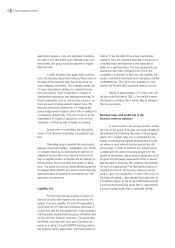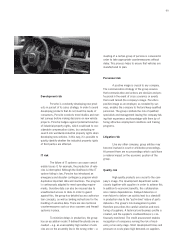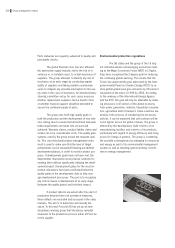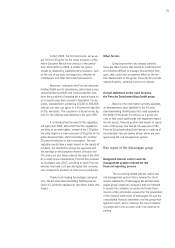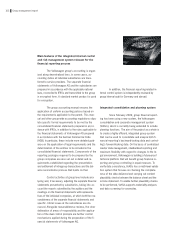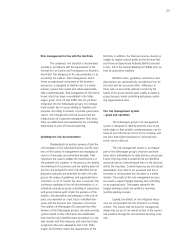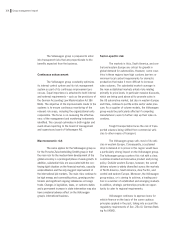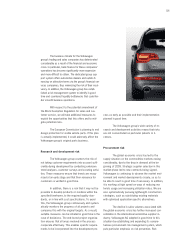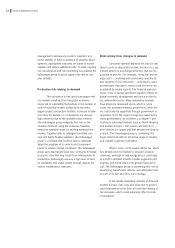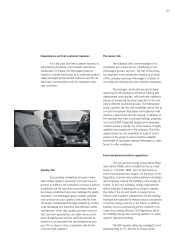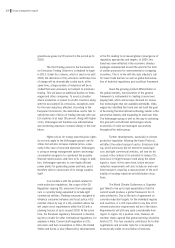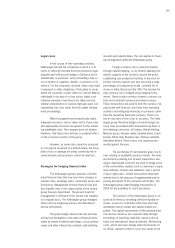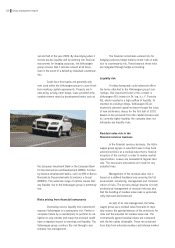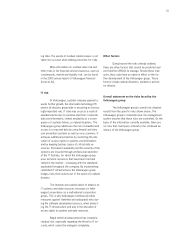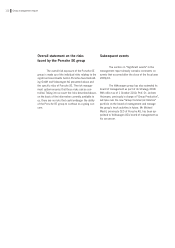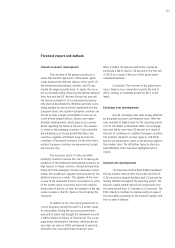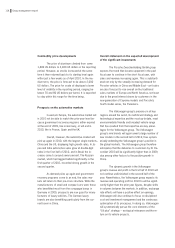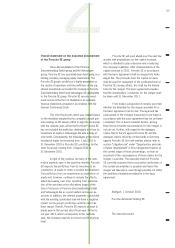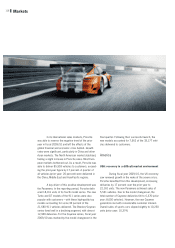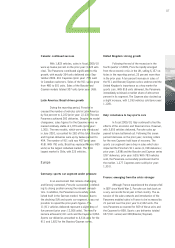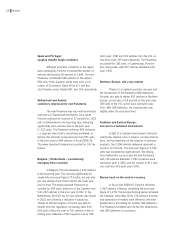Porsche 2009 Annual Report Download - page 108
Download and view the complete annual report
Please find page 108 of the 2009 Porsche annual report below. You can navigate through the pages in the report by either clicking on the pages listed below, or by using the keyword search tool below to find specific information within the annual report.
greenhouse gases by 50 percent in the period up to
2050.
The third trading period in the European Un-
ion Emissions Trading Scheme is scheduled to begin
in 2013. Under this scheme, which is due to run until
2020, the allocation of CO2 emission certificates free
of charge will be dramatically scaled back; at the
same time, a large number of industries will be in-
cluded that were previously not subject to emissions
trading. This will place an additional burden on Volks-
wagen and other companies. To avoid a situation
where production is moved to non-EU countries along
with the associated CO2 emissions, exceptions exist
for the main industries affected. According to the
European Commission, the automotive sector fails to
satisfy the main criterion of trading intensity with non-
EU countries of at least 30 percent. Along with higher
costs, Volkswagen will therefore see administrative
and monitoring expenses increase sharply in the near
future.
Higher prices for energy and emissions rights
do not only apply to the Volkswagen group’s own fa-
cilities but will also increase material prices, espe-
cially in the case of steel and aluminum. Volkswagen
is using an energy management system and energy
conservation programs to counteract the possible
financial repercussions and risks to its image. In addi-
tion, Volkswagen operates its own highly efficient
power plants for generating power and heat, and is
therefore able to secure part of its energy supplies
itself.
In accordance with the product-related cli-
mate protection regulations, the scope of the EU
Regulation capping CO2 emissions from passenger
cars is currently being expanded to include light
commercial vehicles. Flanking measures designed to
influence consumer behavior and fiscal policy in EU
member states by way of a CO2-oriented vehicle tax
will create strict requirements within the EU with a
planning horizon of up to around 2020. At the same
time, the European regulatory framework is develop-
ing into a model for other international regulations, for
example in India. Current draft regulation on CO2
emissions and fuel consumption in China, the United
States and Korea is also influenced by developments
in the EU, leading to increased global convergence of
regulatory approaches and targets. In 2009, this
trend was even reflected in the economic stimulus
packages implemented around the world in the form
of similar provisions for environmental or scrapping
incentives. This is in line with the auto industry’s call
for lower trade barriers as well as global harmoniza-
tion of technical regulations and a political framework.
Given the growing product differentiation in
the global markets, harmonization of the general
framework is instrumental in creating a more level
playing field, which will increase demand for innova-
tive technologies that are available worldwide. Volks-
wagen has identified this trend and set itself the goal
of becoming the international technology leader in the
automotive industry and expanding its lead over time.
The Volkswagen group is well on the way to achieving
this goal with cost-efficient technologies whose
economies of scale are leveraged successfully
throughout the entire group.
Further developments, especially in climate
protection regulation following the Kyoto Protocol,
will affect the entire transport sector. Emissions trad-
ing, which previously did not extend to passenger
cars and light commercial vehicles, will now be dis-
cussed in the context of its potential to reduce CO2
emissions in freight transport and along the whole
logistics chain. At the same time, future emission
reduction requirements will also include air and mari-
time transport, requiring a reassessment of the prof-
itability of existing industrial and distribution struc-
tures.
The World Climate Conference in Copenha-
gen failed to live up to high expectations that the
summit would produce a global framework for cli-
mate protection. Due to the lack of agreement on
concrete reduction targets for the individual regions
and countries, it is still impossible to say how strict
climate protection requirements will be in the future.
Requirements will still vary quite considerably from
region to region. On a positive note, however, all
member states agreed that global warming should be
held at 2°C. This has created a solid basis for further
negotiations and provides hope for a meaningful,
economically viable reconciliation of interests.
108 Group management report


